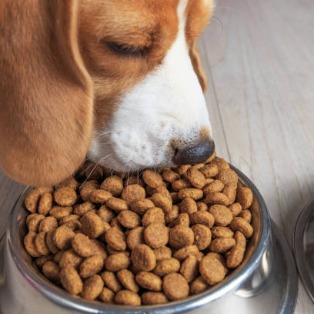Table of Contents
Freeze-Dried Pet Food: Benefits for Dogs, Cats & Livestock

Freeze-dried pet food is revolutionizing animal nutrition, offering convenience, safety, and nutrient-rich options for pets and livestock alike. By using lyophilization (freeze-drying), manufacturers preserve raw ingredients’ natural benefits while eliminating pathogens and extending shelf life. This guide explores the advantages of raw freeze-dried dog food, innovative poultry feed preservation, and veterinary uses of lyophilization, alongside cost comparisons and safety tips.
Commercial vs. Homemade Freeze-Dried Pet Food
Cost Analysis per Pound
| Type | Commercial (e.g., Stella & Chewy’s) | Homemade |
|---|---|---|
| Cost per Pound | 20–50 | 8–15 (ingredients + energy) |
| Equipment | N/A | 2,000–5,000 (freeze dryer) |
| Time Investment | None | 24–48 hours per batch |
Best For:
Commercial: Busy pet owners seeking convenience and guaranteed safety.
Homemade: Those prioritizing customization (e.g., hypoallergenic recipes) or bulk savings.
Safety Protocols: Salmonella Prevention
Commercial:
High-Pressure Processing (HPP) kills pathogens without heat.
Irradiation or ozone treatment for raw meats.
Rigorous third-party testing.
Homemade:
Source USDA-approved meats and organic produce.
Pre-freeze ingredients at -20°C for 72+ hours to reduce bacteria.
Use oxygen absorbers in storage to inhibit microbial growth.
Livestock Applications of Freeze-Drying
1. Preserved Colostrum for Calves
Colostrum is critical for newborn immunity but spoils rapidly. Freeze-drying:
Extends shelf life to 2+ years without refrigeration.
Retains 95% of immunoglobulins (IgG).
Enables precise dosing for weaker calves.
How It’s Used: Rehydrate with warm water and feed within 1 hour of birth.
2. Emergency Poultry Feed
Freeze-dried feeds provide a lifeline during supply chain disruptions:
Insects: Black soldier fly larvae (50% protein) regain texture when soaked.
Grains/Vegetables: Peas, corn, and alfalfa maintain 90% of nutrients.
Storage: 5–10 years in airtight containers vs. 6 months for traditional feed.
Case Study: During avian flu outbreaks, farmers use freeze-dried rations to avoid contaminated supply routes.
Veterinary Uses of Lyophilization
1. Vaccines & Medications
Lyophilized vaccines (e.g., rabies, distemper):
Last 18–24 months at room temperature vs. 6 months refrigerated.
Reduce cold chain logistics for rural clinics.
2. Blood Plasma & Serums
Freeze-dried plasma for emergency transfusions:
Rehydrates in minutes.
Used in equine and livestock trauma care.
3. Probiotics & Supplements
Live bacteria strains (e.g., for gut health) remain viable for years when freeze-dried.
Key Considerations for Pet Owners & Farmers
Palatability: Cats often prefer freeze-dried textures over kibble.
Transitioning: Mix freeze-dried food with current diet to avoid digestive upset.
Storage: Keep in cool, dry places; avoid humidity to prevent clumping.
Final Thoughts
From raw freeze-dried dog food that retains steak-like flavor to life-saving lyophilized colostrum for calves, freeze-drying bridges nutrition and practicality. While commercial options offer safety and ease, DIY enthusiasts can tailor recipes for specific needs. For livestock, this technology ensures food security and health resilience. Always consult veterinarians or nutritionists to optimize diets—your animals deserve the best of science and nature.
